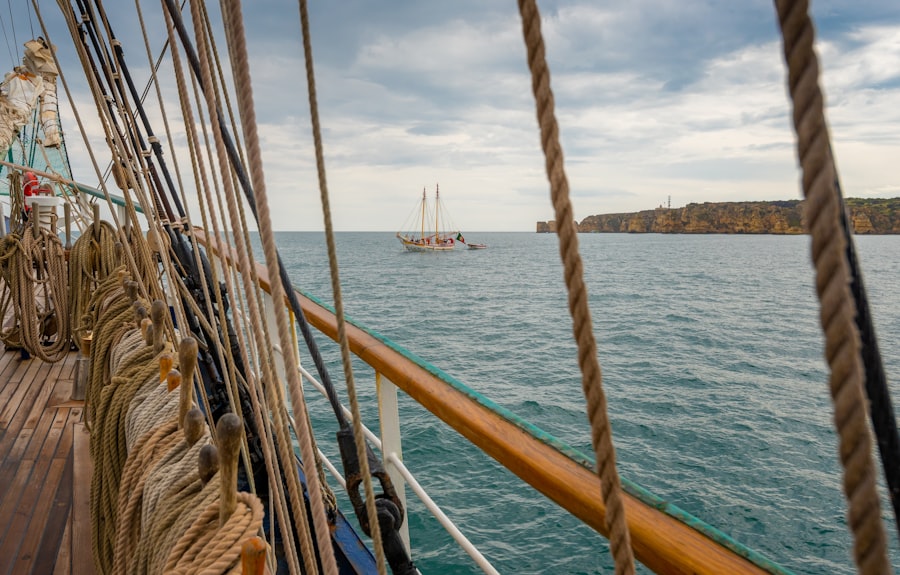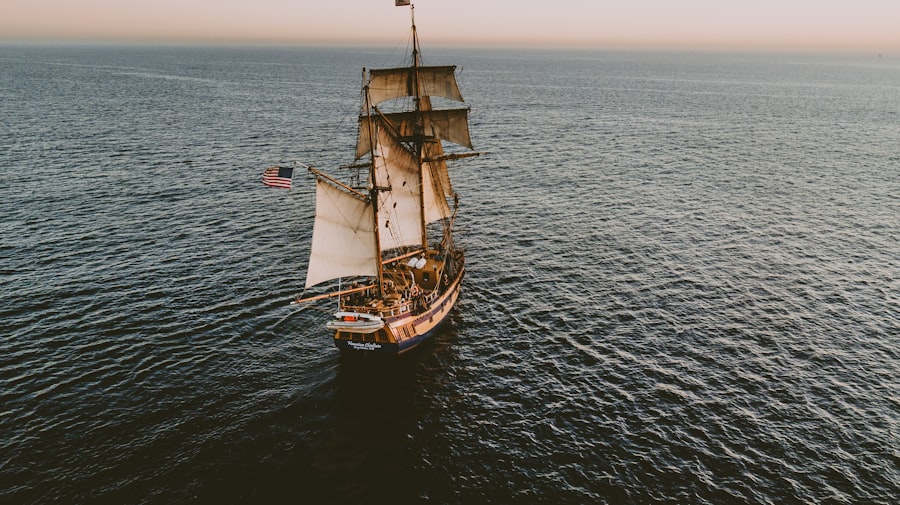The Drake Passage, a body of water that separates South America from Antarctica, is renowned for its tumultuous seas and breathtaking vistas. Named after the English explorer Sir Francis Drake, who navigated these waters in the late 16th century, the passage is often considered one of the most challenging maritime routes in the world. Stretching approximately 600 kilometers (about 370 miles) between Cape Horn and the Antarctic Peninsula, it serves as a critical gateway for vessels traveling to and from the southernmost continent.
The Drake Passage is not only a geographical marvel but also a significant ecological zone, teeming with diverse marine life and serving as a migratory route for various species. For adventurers and nature enthusiasts alike, sailing through the Drake Passage offers an unparalleled experience. The journey is often characterized by dramatic weather changes and stunning landscapes, where towering icebergs and rugged coastlines create a striking contrast against the deep blue sea.
However, the passage is also infamous for its unpredictable conditions, which can turn a serene voyage into a tumultuous adventure in a matter of hours. As such, understanding the nuances of this waterway is essential for anyone considering a trip to Antarctica.
Key Takeaways
- The Drake Passage is a body of water between South America’s Cape Horn and the South Shetland Islands of Antarctica, known for its rough seas and challenging sailing conditions.
- Weather conditions in the Drake Passage are characterized by strong winds, high waves, and rapidly changing weather, making it one of the roughest stretches of water in the world.
- The peak season for sailing the Drake Passage is from November to March, when the weather is relatively milder and wildlife sightings are abundant.
- The off-peak season for sailing the Drake Passage is from April to October, when the weather is harsher and the sea conditions are more challenging.
- When sailing the Drake Passage, travelers should consider the possibility of encountering a variety of wildlife, including whales, seals, and numerous species of seabirds.
- Recommended clothing for sailing the Drake Passage includes warm, waterproof layers, insulated boots, and windproof outerwear to protect against the cold and wet conditions.
- Advantages of sailing the Drake Passage during the best time include calmer seas, better wildlife sightings, and the opportunity to experience Antarctica during its summer months.
- Disadvantages of sailing the Drake Passage during the best time include higher prices, larger crowds, and the potential for itinerary changes due to weather conditions.
- Tips for booking a cruise during the best time to sail the Drake Passage include planning and booking well in advance, considering travel insurance, and being flexible with travel dates.
- Alternative routes and transportation options for reaching Antarctica include flying to King George Island and taking a shorter boat journey to the Antarctic Peninsula, or taking a longer cruise from South America’s southern ports.
- In conclusion, sailing the Drake Passage is a unique and challenging experience that requires careful consideration of weather conditions, wildlife sightings, and the best time to visit, in order to make the most of this extraordinary journey.
Weather conditions in the Drake Passage
The weather in the Drake Passage is notoriously volatile, making it a subject of fascination for meteorologists and sailors alike. The region is influenced by the confluence of several ocean currents, including the Antarctic Circumpolar Current, which can lead to sudden shifts in wind patterns and sea conditions. Sailors often encounter strong winds, high waves, and rapidly changing weather, which can create both challenges and exhilarating experiences.
The passage is known for its “Drake Shake,” a term used to describe the rough seas that can occur when conditions are particularly severe. During certain times of the year, the weather can be more favorable for sailing. The summer months in the Southern Hemisphere, from November to March, typically bring milder temperatures and calmer seas.
However, even during these months, sailors must remain vigilant as storms can arise unexpectedly. The temperature in the Drake Passage can vary significantly, with averages ranging from -2°C (28°F) in winter to 10°C (50°F) in summer. This variability necessitates careful planning and preparation for those embarking on a journey through these waters.
Peak season for sailing the Drake Passage

The peak season for sailing the Drake Passage generally aligns with the Antarctic summer, which spans from late November to early March. During this period, temperatures are at their warmest, and wildlife activity is at its peak, making it an ideal time for exploration. Many cruise operators schedule their voyages during these months to take advantage of the more favorable weather conditions and increased opportunities for wildlife sightings.
Travelers can expect longer daylight hours, with nearly 24 hours of sunlight at times, allowing for extended exploration of the stunning landscapes. In addition to the pleasant weather, this peak season also coincides with the breeding and feeding cycles of various marine species. Penguins, seals, and whales are particularly active during these months, providing travelers with unique opportunities to observe these animals in their natural habitats.
The vibrant ecosystems of the region come alive during this time, making it a prime period for photographers and nature lovers eager to capture the beauty of Antarctica.
Off-peak season for sailing the Drake Passage
| Metrics | Off-peak Season |
|---|---|
| Temperature | Colder, ranging from 0°C to 5°C |
| Weather | More unpredictable with stronger winds |
| Sea Conditions | Rougher seas with higher waves |
| Wildlife | Less wildlife sightings compared to peak season |
| Availability | More availability and lower prices for tours |
Sailing the Drake Passage during the off-peak season presents a different set of challenges and rewards. The months outside of the peak season—primarily from April to October—are characterized by colder temperatures and harsher weather conditions. While some adventurous travelers may still choose to navigate these waters during this time, they must be prepared for rough seas and limited wildlife sightings.
The off-peak season can be less crowded, offering a more intimate experience for those willing to brave the elements. Despite the challenges posed by off-peak sailing, there are unique advantages to this time of year. The dramatic landscapes of Antarctica take on a different character as ice formations shift and change with the seasons.
For those who appreciate solitude and are willing to endure less predictable weather, sailing during the off-peak season can be a rewarding adventure.
Considerations for wildlife sightings
Wildlife sightings are one of the primary draws for travelers venturing through the Drake Passage. The region is home to an array of species, including various types of penguins, seals, and whales. However, successful wildlife viewing depends significantly on timing and environmental conditions.
During peak season, travelers are more likely to encounter large colonies of penguins as they engage in breeding activities or witness whales migrating through the waters. The presence of abundant krill during this time also attracts numerous marine mammals. In contrast, off-peak seasons may yield fewer sightings due to colder temperatures and reduced animal activity.
Many species migrate or go into hibernation during these months, making encounters less frequent. Travelers should also consider that weather conditions can impact visibility and accessibility to certain areas known for wildlife activity. Therefore, those planning a trip should research specific wildlife patterns and consult with experienced guides to maximize their chances of observing these magnificent creatures.
Recommended clothing for sailing the Drake Passage

When preparing for a journey through the Drake Passage, appropriate clothing is essential for comfort and safety. Given the unpredictable weather conditions, layering is key. Travelers should opt for moisture-wicking base layers that provide warmth without adding bulk.
Insulating mid-layers such as fleece or down jackets are recommended to retain body heat during colder spells. An outer layer that is both waterproof and windproof will protect against rain and spray from waves. Footwear is another critical consideration; sturdy waterproof boots with good traction are necessary for navigating wet decks and icy terrain.
Accessories such as gloves, hats, and scarves should not be overlooked either; they provide additional warmth and protection against biting winds. Sunglasses with UV protection are also advisable due to the intense sunlight reflecting off ice and water surfaces. By dressing appropriately for varying conditions, travelers can ensure a more enjoyable experience while sailing through this remarkable passage.
Advantages of sailing the Drake Passage during the best time
Sailing through the Drake Passage during peak season offers numerous advantages that enhance the overall experience. One of the most significant benefits is the opportunity for optimal wildlife sightings. As previously mentioned, this period coincides with breeding seasons for many species, allowing travelers to witness penguins nurturing their chicks or whales breaching in search of food.
The vibrant ecosystems come alive during these months, providing an unparalleled opportunity for nature enthusiasts. Additionally, milder weather conditions during peak season contribute to a more comfortable sailing experience. While rough seas can still occur, travelers are less likely to encounter extreme weather compared to off-peak months.
Longer daylight hours also allow for extended exploration and photography opportunities, enabling travelers to capture stunning landscapes bathed in golden light. Overall, sailing during this time maximizes both comfort and adventure.
Disadvantages of sailing the Drake Passage during the best time
Despite its many advantages, sailing through the Drake Passage during peak season does come with certain drawbacks. One notable disadvantage is increased competition for bookings among travelers eager to explore Antarctica’s wonders. As demand rises during these months, prices for cruises tend to escalate significantly.
This surge in popularity can lead to crowded excursions and less intimate experiences when visiting popular wildlife viewing sites. Moreover, while weather conditions are generally milder during peak season, they remain unpredictable. Sudden storms can still arise, leading to rough seas that may disrupt travel plans or limit access to certain areas.
Travelers should be prepared for potential itinerary changes due to weather-related challenges. Balancing these factors is essential for those considering a trip during this bustling time.
Tips for booking a cruise during the best time to sail the Drake Passage
For those looking to book a cruise through the Drake Passage during peak season, careful planning is crucial to securing an ideal experience. First and foremost, travelers should begin their research well in advance; many cruise operators open bookings nearly a year ahead of departure dates. Early planning not only increases options but also allows travelers to take advantage of early-bird discounts.
Additionally, flexibility with travel dates can be beneficial when searching for available cabins or lower prices. Travelers should also consider smaller expedition vessels that may offer more personalized experiences compared to larger cruise ships. Reading reviews and seeking recommendations from fellow travelers can provide valuable insights into different operators’ reputations and offerings.
Finally, consulting with travel agents who specialize in Antarctic voyages can help navigate options effectively.
Alternative routes and transportation options
While sailing through the Drake Passage is a popular choice for reaching Antarctica, alternative routes and transportation options exist for those seeking different experiences or logistical solutions. Some travelers opt for fly-cruise packages that allow them to bypass the rough waters entirely by flying directly to Ushuaia or King George Island before boarding their vessel. This option can save time and reduce exposure to potentially uncomfortable sea conditions.
Another alternative involves exploring other regions of Antarctica via chartered flights or smaller vessels that operate along specific routes within the continent itself. These options may provide unique perspectives on Antarctica’s diverse landscapes without necessarily traversing the entire Drake Passage. Regardless of chosen routes or methods of transportation, each option offers its own set of adventures waiting to be discovered.
Conclusion and final considerations
In conclusion, sailing through the Drake Passage presents an extraordinary opportunity for adventure seekers and nature lovers alike. With its breathtaking scenery and rich biodiversity, this waterway serves as a gateway to one of Earth’s last frontiers—Antarctica. Understanding weather patterns, peak seasons, wildlife considerations, appropriate clothing choices, and booking strategies can significantly enhance one’s experience while navigating these challenging yet rewarding waters.
Whether travelers choose to embark on their journey during peak or off-peak seasons, each experience offers unique insights into this remarkable region’s beauty and complexity.
Sailing the Drake Passage is a thrilling adventure that requires careful planning to ensure a safe and enjoyable journey. The best time to sail this challenging stretch of water is typically during the Southern Hemisphere’s summer months, from November to March, when the weather conditions are relatively milder. For more detailed insights on planning your voyage and understanding the seasonal variations, you can refer to this informative article on the topic. Check out this related article for more information on the best time to sail the Drake Passage and tips for a successful expedition.
WATCH NOW! Drake Passage: Earth’s Deadliest Waters Revealed
FAQs
What is the Drake Passage?
The Drake Passage is the body of water between the southern tip of South America and the northern tip of the Antarctic Peninsula. It is known for its rough seas and challenging sailing conditions.
When is the best time to sail the Drake Passage?
The best time to sail the Drake Passage is during the austral summer, which runs from November to March. During this time, the weather is relatively milder and the sea conditions are more favorable for sailing.
What are the sea conditions like in the Drake Passage?
The Drake Passage is known for its rough seas and strong winds. It is notorious for its unpredictable and often stormy weather, making it one of the most challenging sailing routes in the world.
Are there any specific wildlife or natural phenomena to see while sailing the Drake Passage?
Sailing the Drake Passage offers the opportunity to see a variety of wildlife, including whales, seals, and seabirds. Additionally, passengers may witness natural phenomena such as icebergs and the stunning landscapes of the Antarctic Peninsula.
What should I consider before sailing the Drake Passage?
Before sailing the Drake Passage, it is important to consider the potential for seasickness due to the rough sea conditions. It is also advisable to be prepared for the cold temperatures and to pack appropriate clothing for the journey. Additionally, it is recommended to book a trip with an experienced and reputable tour operator.
